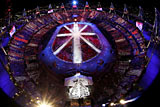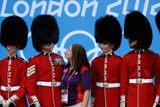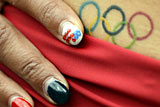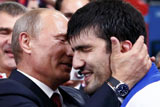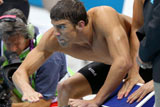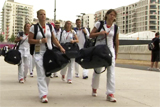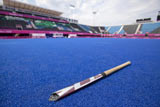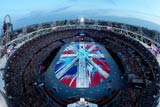Tennis
Updated: 2012-05-14 18:23:53
( london2012.com)
|
|||||||||||
Just three weeks after the end of the annual grand slam tournament, Wimbledon will once again welcome the best players in the world for the London 2012 Tennis competition.
Every four years, the Olympic Tennis tournament attracts the world's top stars. At Beijing 2008, Rafael Nadal won the men's Singles, while the Williams sisters triumphed in the women's Doubles. All the players will be aiming for a showdown on Wimbledon's Centre Court, where the Olympic champions will be crowned.
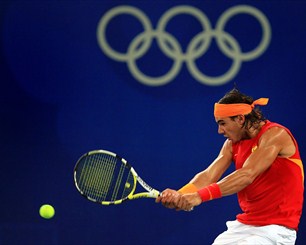 |
Competition dates
July 28 - Aug 5
Competition venue
Wimbledon
Number of medal events
Five - men's and women's Singles, men's and women's Doubles and Mixed Doubles.
Number of competitors
172 (86 men and 86 women). Each country is limited to a total of 12 athletes - six men and six women across all events, which includes a maximum of four athletes in each Singles and two teams in each Doubles event.
From the competitors already entered into the Singles or Doubles, a maximum of two Mixed Doubles teams from any country may compete in the Mixed Doubles event.
Field of play
The Singles court is 23.77m long and 8.23m wide; the Doubles court is the same length and 10.97m wide. The court is divided in half by a net that is 0.914m at the centre.
History of Tennis at the Olympic Games
Tennis appeared at the first modern Olympic Games in 1896 but was dropped from the programme after the Paris 1924 Games. It returned 64 years later, with Miloslav Mečíř (Czechoslovakia) and Steffi Graf (West Germany) winning gold in the two Singles tournaments at Seoul 1988.
The Tennis competition at London 2012 will be held on the grass courts of Wimbledon, which has its own Olympic history. The venue staged the Tennis competition when London first hosted the Olympic Games in 1908, with Great Britain winning all six gold medals.
The basics
Players hit a ball over the net into their opponents' half. The object is to score points by playing the ball so that it cannot be returned over the net within the boundary lines.
Tennis has a unique scoring system. The first three points in a game are noted as 15, 30 and 40, with the next point winning the game. A score of 40-40 is called deuce, and from that score two further points must be won consecutively to win the game. A score of zero in a game is called love.
Matches consist of sets, which are decided by the first to six games and must be won by at least two clear games (eg: 6-3, 7-5). At six games all, in all but the final set, players contest a tie-break, which decides the winner of the set.
All matches are the best-of-three sets with the exception of the men's Singles final, which is the best of five sets. The tie-break will operate in every set except the fifth set in the men's Singles final and the third set in the other matches (except Mixed Doubles) when an advantage set shall be played. In the Mixed Doubles the third set shall be played as a match tie-break (10 points).
Competition format
The tournament is a knockout format, with the winners of the semi-finals in each event going head-to-head on Centre Court for the gold medals. There are 16 seeded players in each Singles event, eight seeded teams in the men's and women's Doubles, and four seeded teams in the Mixed Doubles. Seedings are determined by world rankings.
Officials
An umpire is in charge of the match, ensuring that the rules of the game are observed and calling out the score after each point. He/she is assisted by line umpires, who keep an eye on whether the ball lands in or out of the court.
Keys to success
Tennis is a fast and dynamic sport needing strength and quick reactions. Matches can last for hours, so players also need incredible stamina - mental and physical. Doubles players must be in perfect harmony and communicate well, working together as a team.
Jargon buster
Ace - a legal serve that the opposing player fails to touch with their racket.
Baseline - the far boundary line at either end of the court.
Lob - a ball hit high in the air, usually deep into the opponent's court.
Love - no points; zero.
Tie-break - if the score in a set reaches 6-6 in anything other than the deciding set, there is a tie-break, won by the first player or Doubles team to reach seven points with a margin of at least two clear points. A 10-point match tie-break is also used to decide Mixed Doubles matches that reach one set all, with the first team to reach 10 points with a margin of at least two clear points winning the match.
Medal Count |
||||
| 1 | 46 | 29 | 29 | |
| 2 | 38 | 27 | 22 | |
| 3 | 29 | 17 | 19 | |
| 4 | 24 | 25 | 33 | |
| 5 | 13 | 8 | 7 | |
| 6 | 11 | 19 | 14 | |

